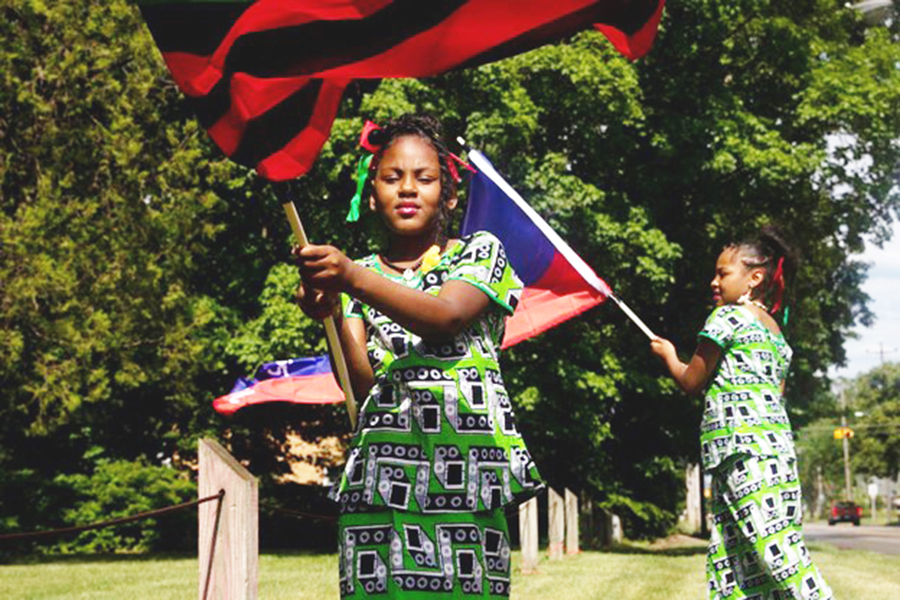CHARLOTTESVILLE, Virginia, (Thomson Reuters Foundation) – U.S. colleges are confronting their past ties to slavery with public apologies, renamed buildings and scholarships for descendants – a push that could shape national efforts to tackle the thorny issue of reparations.
Five schools in Virginia are racing to comply with a pioneering state law requiring them to launch scholarships or economic programs, while Georgetown University recently doled out the first grants from a slavery “reconciliation fund.”
“When you go to (the University of Virginia), you see Thomas Jefferson literally on a pedestal. How do you think that makes me feel?” said Robin Reaves Burke, a descendant of Mary Hemings, whose family was enslaved at the former U.S. president’s home.
Reaves Burke is hopeful her son Clinton, who is enrolling at the university this year, will be accepted as part of the scholarship program, as discussion about broader reparations measures continues elsewhere in the country.
“This is a huge process and it’s historic,” she said.
She credited the university with taking the lead on acknowledging the enslaved people who built the school and working to move forward on implementing the new law.
“It has to do with atoning for a wrong,” Reaves Burke said from near campus, taking breaks from monitoring a virtual meeting of descendants.
Debate about slavery reparations has intensified in the United States as Congress considers proposals to financially compensate descendants in an effort to confront and repair the longstanding racial and economic discrimination against Black Americans. They could draw on the experiences of universities as they try to move forward on the issue, which is highly divisive along political lines and among Black and white Americans.
“College campuses have always been ground zero for testing out those new political ideas, and I see reparations as another space for that,” said Ollie Henry, a student activist on the issue at Georgetown in Washington, D.C.
Two years ago, in a first-of-its-kind law, the Virginia General Assembly tasked five public universities established before 1865 with setting up scholarships or economic development programs for individuals or communities with a “demonstrated historic connection to slavery.”
The schools, which are not allowed to use state funds or hike tuition fees to fund the scholarships, were also instructed to commemorate enslaved people who worked at the schools.
“This has been a problem that is 404 years in the making,” said David Reid, the state delegate who sponsored the legislation.
“And it’s going to take a long-term effort from individual legislators, from the universities, and from the General Assembly to be able to address these issues.”
The schools covered under the law are the University of Virginia (UVA), the College of William & Mary, Virginia Military Institute, Longwood University and Virginia Commonwealth University (VCU).
As part of its efforts, VCU launched a special commission named “Project Gabriel” earlier this year to gather recommendations – paying homage to Gabriel Prosser, an enslaved man from Richmond who led an unsuccessful rebellion in 1800.
Restoring trust is paramount given Virginia’s history, said Clifton Peay, a commission co-chair.
He recalled that Virginia’s first African American elected governor former Gov. Doug Wilder, who entered office in 1990, had not been allowed to attend all-white colleges in the state.
“That’s why it’s critical that the university pursue this and re-establish – or establish – a better relationship with the community,” he said of the school, which is located in the capital of Richmond – once also the capital of the Confederate States of America, comprised of slave-holding southern states.
At Georgetown, the first grants were disbursed this year from a $400,000-per-year fund for community projects intended to benefit descendants of communities once enslaved on Jesuit plantations in Maryland.
The university was given the proceeds of the sale of approximately 300 enslaved people by the Jesuits in 1838.
But getting to the stage of rolling out initiatives has been “a rocky road,” said Jessica “Millie” Tilson, a descendant whose virtual tutoring program, Mon Petit Maringouin, was one of the five initial recipients of the funding.
Students voted in a non-binding referendum in 2019 to increase tuition by nearly $30 per semester to benefit descendants, but the administration ended up charting its own course with the reconciliation fund. It said it had been “inspired by” the referendum.
Prior to the students’ vote, Georgetown had already started taking steps to confront the school’s legacy. Officials announced an admissions policy in 2016 that put descendant status on par with legacy status.
The school has also publicly apologized for its past and, among other efforts, in 2017 renamed a building after Isaac Hawkins – of whom Tilson is a descendant.
While significant, Tilson suggested a more tangible or concrete benefit would have been preferable.
The university is also working on an ongoing digital archive in its slavery archives and announced a new slavery study center this year, a spokesperson said in a statement.
“We are committed to continuing to understand and respond to our involvement in the institution of slavery and ensure that our community members engage with this history and work towards racial justice,” the spokesperson added.
Other schools, such as Brown University and Harvard University in the northeast, have taken similar steps to confront their historic links to slavery.
But while there is progress by academic institutions, there is still a long way to go, said Melisande Short-Colomb, a descendant of the enslaved people sold to benefit Georgetown.
“Georgetown is still a predominantly white institution doing predominantly white things for predominantly white people,” said Short-Colomb, who enrolled at Georgetown as a student in 2017.
The positive impact of nascent measures could take years to become apparent, she added.
“In 10 years, 15, 20 years we’ll actually be able to put our finger on the pulse of this work and see if the patient is alive and the work that we are doing now is actually creating sustainable pathways for repair and redress,” she said.










